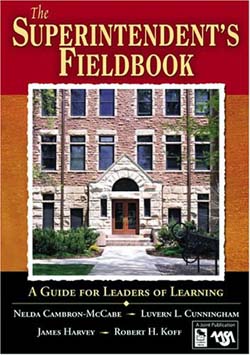“No Child Left Behind,” the signature education legislation of President George W. Bush, fails to deal with so many vital aspects of public education that the administration’s approach to school reform is incomplete, leading researchers conclude in this new book released this month.
The Superintendent’s Fieldbook is co-authored by Nelda Cambron-McCabe of Miami University, Luvern L. Cunningham of Ohio State University, James Harvey of the University of Washington and Robert H. Koff of Washington University.

The book says that by putting all of its eggs in the basket of school standards and tests, the law overlooks other critical components of school administration. These other components include leadership, governance, developing principals and teachers, and the challenges of race and class, out-of-school support for learning, and community engagement.
Drawing on the experiences of 200 superintendents over a 10-year period, the new volume argues that reform involves addressing complex challenges that current policies largely ignore. Those superintendents were members of the Forum for the American School Superintendent and are collectively responsible for the education of millions of students.
“Everyone in the school system understands the dangers of the standardized test ‘quick fix,'” the authors say. “Yet everyone feels forced into the pattern. Why? Because the fundamental solutions require investment, time and care. It is very difficult to endure the delay before results improve.”
Attention to leadership, governance and community needs — to the relationship between and among superintendents, school boards, unions and community residents and agencies — needs to be a major part of the reform agenda, according to the authors.
“It is not wise to impose simple solutions on complex problems that present themselves in different ways in diverse communities,” says Koff, who was responsible for financing the superintendent forum during the 10 years he served as senior vice president of the Danforth Foundation.
Accountability holds up fine as a theory, the authors say, but the theory breaks down the minute it encounters the real world. Anecdotes drawn from the superintendents’ experiences describe local turmoil as schools sprang leaks, budgets sprang holes, and community disputes broke out around race and class, employment favoritism, or depictions of gay couples in schools.
The major sections of the book cover leadership, governance, standards and assessment, race and class, developing school principals, out-of-school support for learning, and community engagement. Offering different mental images of how to conceive of each of these issues, the book provides educators and community leaders with up-to-date theory, lessons from the field and exercises to advance reform and close the achievement gap.
— Andy Clendennen